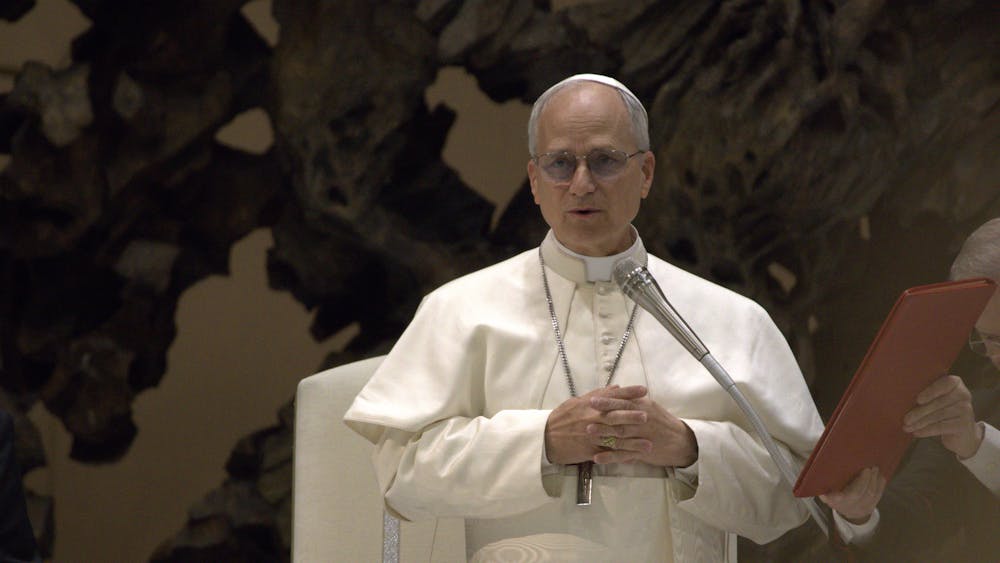While mass incarceration may incapacitate and deter individuals from committing crimes, it can actually empower sophisticated criminal organizations, according to Benjamin Lessing. Lessing, assistant professor of political science at the University of Chicago, unraveled the complicated dichotomy of prison gangs in a lecture “A Hole at the Center of the State: Prison Gangs as a Threat to State Authority” on Thursday.
Lessing said he focuses on organized armed violence involving non-state actors who, unlike revolutionary insurgents, are not trying to topple the state.
“Crime is a transgression of the authority of the state,” he said. “If everyone is breaking the laws, there is no state authority. Criminals transgress state authority and punishment restores that authority.”
His research has focused on two gangs: the Primeirio Comando da Capital (PCC) in Brazil and the Maras in El Salvador, Lessing said.
“Calling them prisons gangs doesn’t convey the scope of these criminal organizations,” he said.
This gang activity can be traced back to mass incarceration, Lessing said.
“Sophisticated prison gangs consolidate control over inmate life — they provide an entire system of government within prison. They propagate through the prison system and project power onto the streets,” he said.
Governmental actions and laws targeting both low and high level offenders may have actually made gangs more powerful, Lessing said.
“Increased incarceration rates further the powers of the gangs, and therefore, beyond a certain point, punishment undermines state authority,” he said. “Mass incarceration and poorly translated gang policies transformed how the gangs were organized and actually made them more powerful.”
Lessing's research focuses on how incarceration effects the collective gang culture. He said within the prison environment, the stability these gangs can provide can create a more positive environment.
“Everybody wins — prisoners, guards and politicians,” he said. “A prison guard in Brazil told me that his job is easier because of the collectivization.”
However, with this increased of power within prisons, gangs also have increased their control outside of the prisons. Lessing said the first time social scientists were able to observe the strong power of gangs on the streets was during a PCC terror attack that shut down São Paulo for four days.
“Prisons gangs have a unique ability to control street level drug markets, and this is an unusual thing, because these street level markets are usually extremely fragmented,” he said.
In order to understand gang structure, it is critical to understand why those who are not incarcerated would support gangs, Lessing said.
“Thinking about this projection of power, there is this kind of fundamental puzzle: why would people on the street take costly and risky actions on behalf of the leaders?” he said “It’s simple: what you do on the outside, you have to answer for on the inside.”
According to Lessing, people on the streets do what the gang wants, even though this activity leads to an increased chance that they will be arrested. If they support the gang, they will be protected in prison — their support for the gang alleviates the blow if they are ever put in prison, he said.
“It is the promise of a not-so-bad time in prison, with a higher likelihood of going to prison,” Lessing said. “If this is true, prison gangs depend on high incarceration rate. Those on the outside need to think they will go back to prison.”
This ultimately contributes to a changing power structure, both inside and outside of the prison, Lessing said. Once again, Lessing said that there are both positives and negatives to this changing power structure. While it decreases the power of the state and increases the drug trade outside of prison, Lessing said this consolidation and power structure leads to less violence in gang-controlled communities, as there are fewer turf wars.
“Overall, my theory says that if prison gangs are getting more consolidated and incarceration rates are increasing, the projection onto the street should increase,” he said. “This will lead to changes in the street level criminal structure and behavior.”
Read More
Trending









